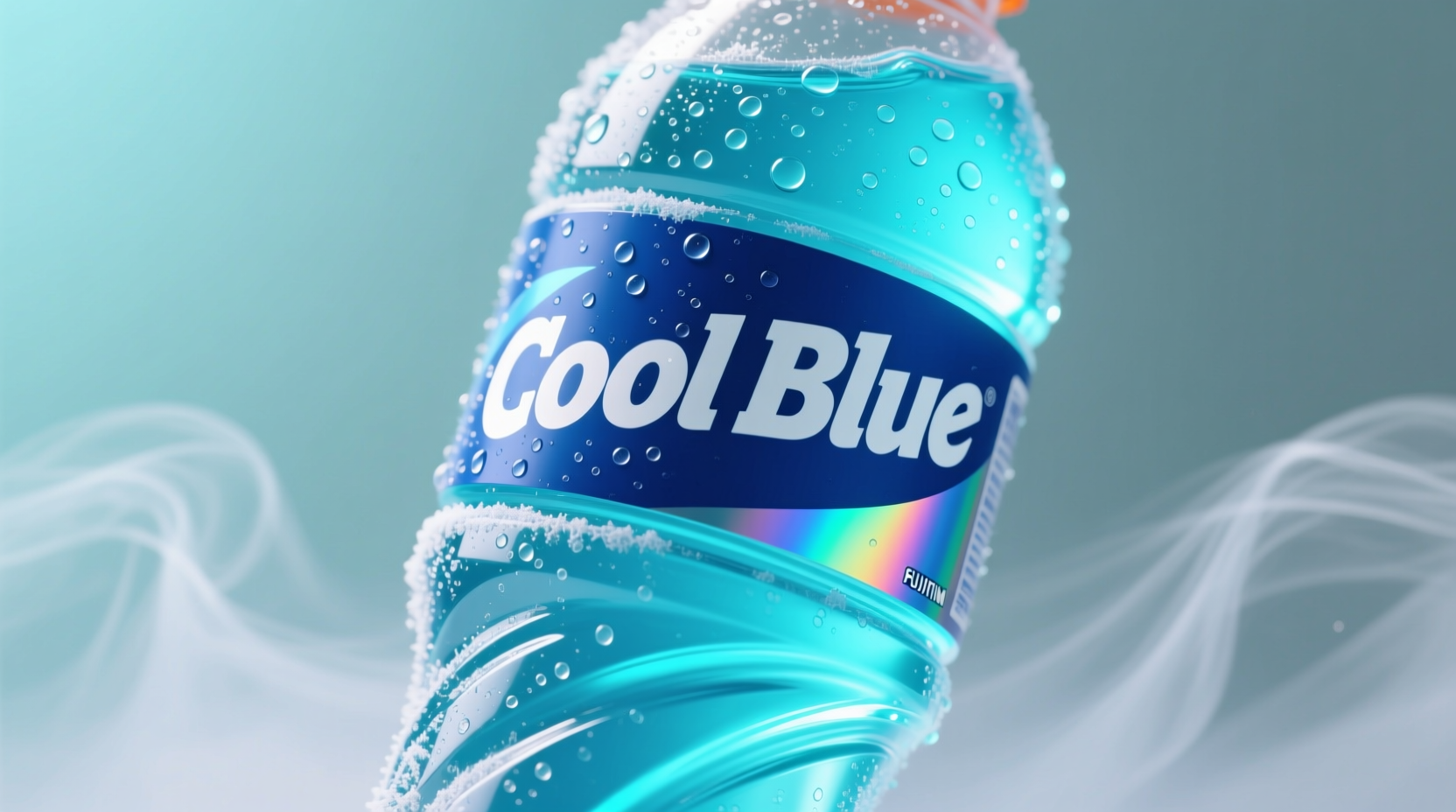If you've ever wondered what flavor Cool Blue Gatorade actually is—beyond the mystery of its vibrant color—you're not alone. Many consumers assume it's blue raspberry, but the reality is more nuanced. This popular sports drink delivers a refreshing berry flavor with a distinctive cooling sensation that sets it apart from other Gatorade varieties.
Decoding the Cool Blue Flavor Profile
Cool Blue Gatorade isn't modeled after a single fruit but rather a carefully crafted blend designed to deliver both refreshment and performance benefits. The flavor combines multiple berry notes with a cooling agent that creates that signature 'chill' sensation. According to Gatorade's official product descriptions, Cool Blue falls under their 'berry ice' flavor category, which explains why it tastes different from traditional fruit-flavored sports drinks.
The cooling sensation comes from carefully calibrated amounts of menthol derivatives that activate cold-sensitive receptors in your mouth without creating an overpowering medicinal taste. This makes Cool Blue particularly popular during hot weather or intense workouts when athletes seek that extra refreshing element.
What's Really in Cool Blue Gatorade?
Examining the ingredient list reveals why Cool Blue tastes the way it does. The primary flavor components include:
- Citric acid (for tartness)
- Natural flavors (berry blend)
- Modified food starch (for mouthfeel)
- Gum arabic (stabilizer)
- Glycerol ester of wood rosin (emulsifier)
- Blue 1 (coloring)
- Acesulfame potassium and sucralose (sweeteners)
- Specific cooling agents (proprietary blend)
The exact composition of the 'natural flavors' and 'cooling agents' remains proprietary, but food scientists confirm these typically include menthol derivatives and berry flavor compounds. Unlike many assume, Cool Blue doesn't contain blue raspberry flavoring—this is a common misconception stemming from other blue-colored beverages.
| Flavor Characteristic | Cool Blue Gatorade | Blue Raspberry Drinks | Regular Berry Gatorade |
|---|---|---|---|
| Primary Flavor Notes | Mixed berry with cooling sensation | Artificial raspberry | Strawberry-raspberry blend |
| Color | Bright blue | Bright blue | Purple-red |
| Cooling Effect | Noticeable | None | None |
| Sweetness Level | Moderate | High | High |
Why 'Cool Blue' Instead of 'Berry Blue'?
The naming convention reflects Gatorade's strategic marketing approach. While many refer to it as 'Berry Blue,' Gatorade officially markets it as 'Cool Blue' to emphasize the distinctive cooling sensation that differentiates it from standard berry flavors. This terminology helps consumers immediately understand the unique experience they'll get.
According to beverage industry analysis from the Beverage Marketing Corporation (beverage marketing corporation.org), sports drink manufacturers deliberately use 'cool' terminology to appeal to consumers seeking refreshment during physical activity. The blue color further reinforces this cooling perception through psychological color association.
When Cool Blue Gatorade Performs Best
Cool Blue's unique flavor profile makes it particularly effective in specific scenarios:
- Hot weather conditions: The cooling sensation provides psychological relief from heat stress
- High-intensity workouts: Refreshing flavor encourages greater fluid consumption
- Post-exercise recovery: The combination of electrolytes and refreshing taste aids rehydration
Research published in the Journal of the International Society of Sports Nutrition (jissn.biomedcentral.com) indicates that flavored sports drinks with cooling elements can increase voluntary fluid consumption by up to 15% compared to non-flavored options during hot conditions. This makes Cool Blue particularly valuable for athletes training in warm environments.
Consumer Preferences and Flavor Evolution
Cool Blue has consistently ranked among Gatorade's top five most popular flavors since its introduction. According to Nielsen retail measurement data, blue-colored sports drinks account for approximately 30% of all sports drink sales in the United States, with Cool Blue representing the majority of that segment.
The flavor has evolved since its introduction in the early 2000s. Originally formulated with higher sugar content, it was reformulated in 2011 to reduce calories while maintaining the distinctive flavor profile. More recent versions have adjusted the cooling agent concentration based on consumer feedback about the intensity of the menthol sensation.

Choosing the Right Gatorade Flavor for Your Needs
While Cool Blue remains popular, the best flavor choice depends on your specific needs:
- For maximum refreshment during hot workouts: Cool Blue or Glacier Freeze
- For traditional fruit flavor: Fruit Punch or Grape
- For less sweetness: Lighter flavors like Lemon-Lime
Understanding what flavor Cool Blue Gatorade actually is helps you make informed choices about which sports drink best meets your hydration needs. Its unique berry-ice profile with cooling sensation serves a specific purpose in Gatorade's product lineup, differentiating it from both standard fruit flavors and other blue-colored beverages.











 浙公网安备
33010002000092号
浙公网安备
33010002000092号 浙B2-20120091-4
浙B2-20120091-4